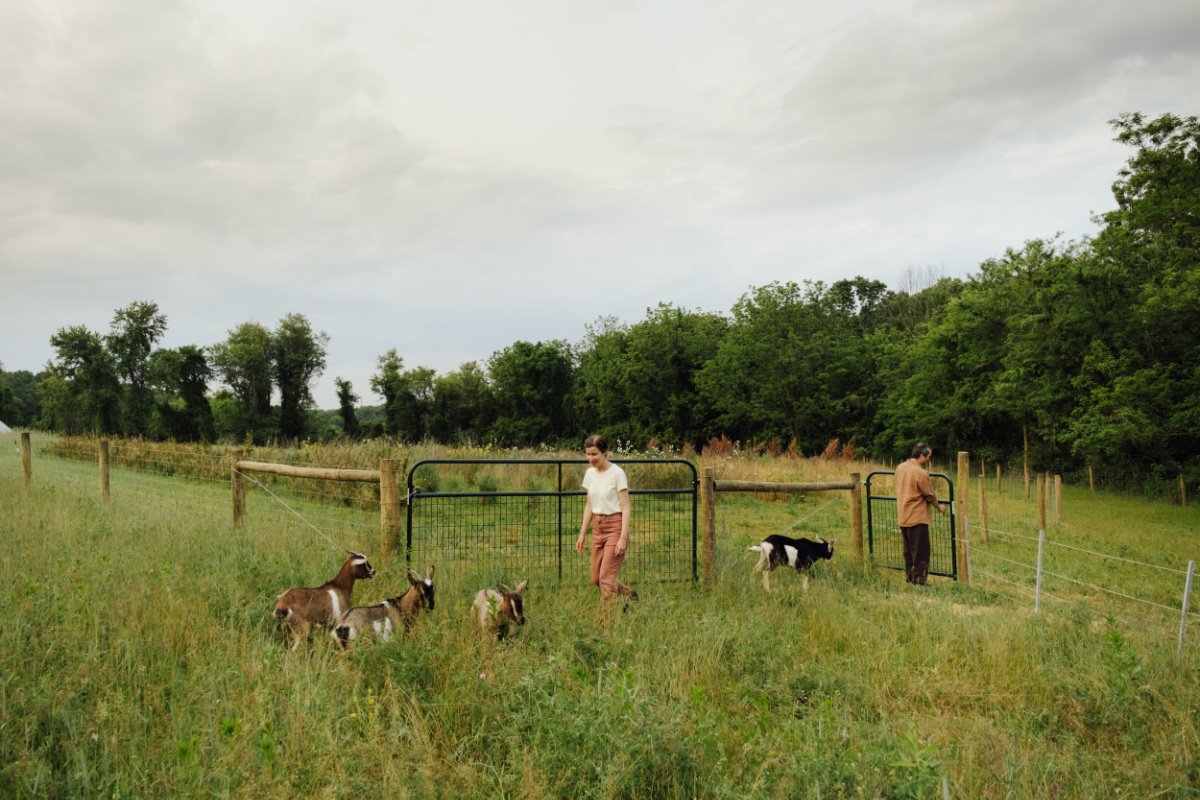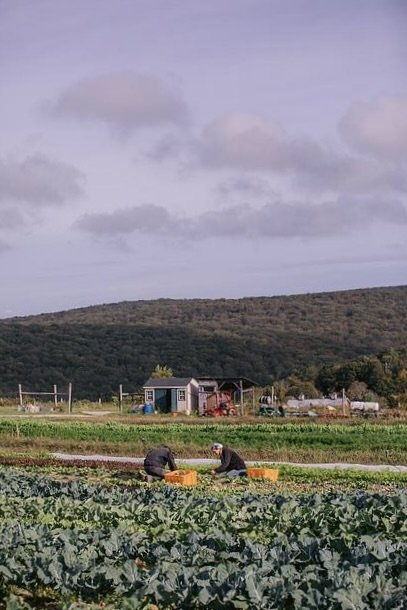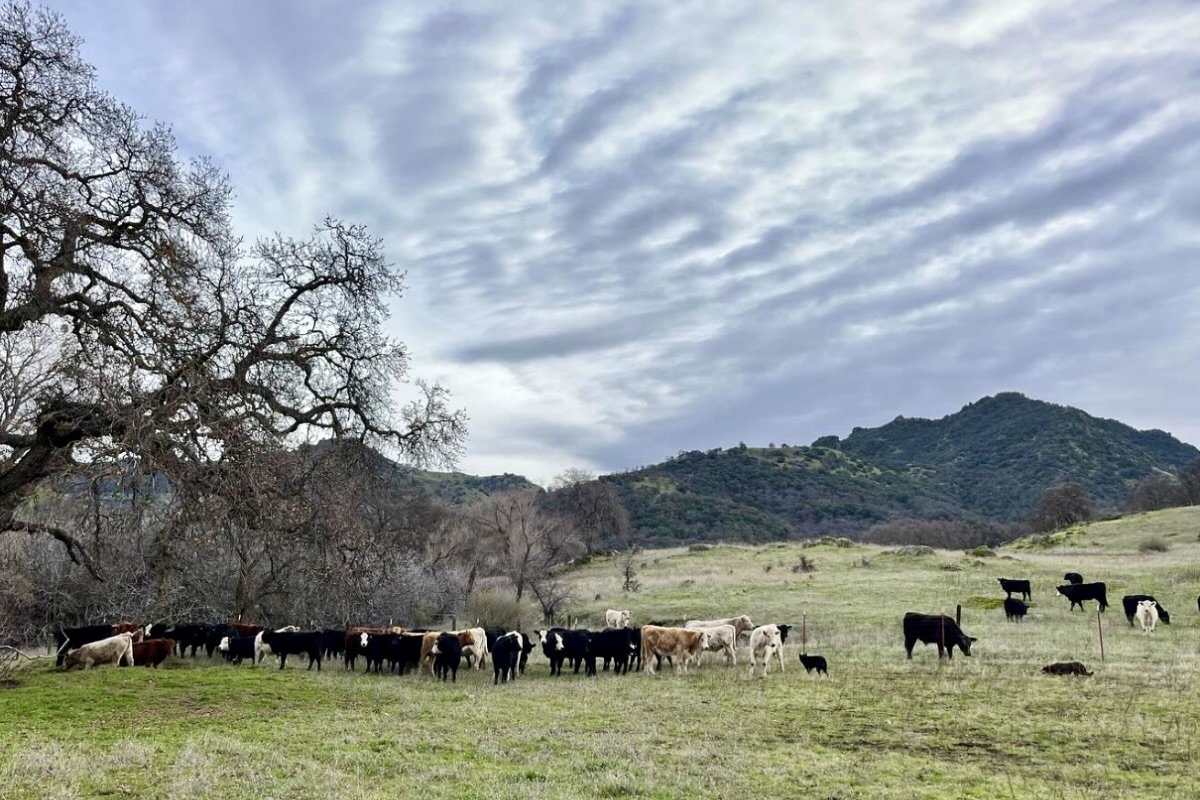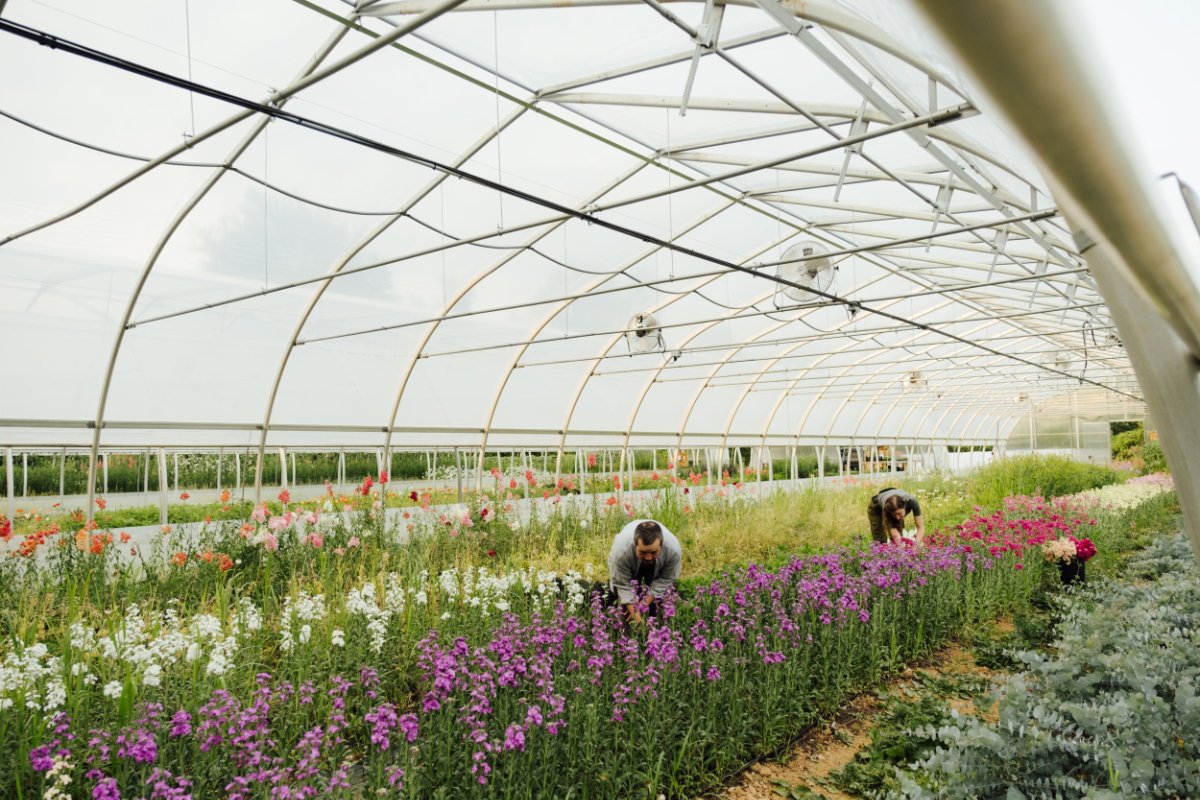Efforts to transition farms to regenerative agriculture are stalled, and the path forward is unclear.

Efforts to transition farms to regenerative agriculture are stalled, and the path forward is unclear.
February 11, 2025

Butterbee Farm, in Maryland, has received several federal grants that have been crucial for the farm’s survival. (Photo credit: L.A. Birdie Photography)
February 24, 2025 Update: On February 20, Secretary of Agriculture Brooke Rollins announced the first release of funds: $20 million granted to farmers through popular conservation programs. Payments to Partnerships for Climate-Smart Commodities and Rural Energy for America Program grantees remain paused.
Expand your understanding of food systems as a Civil Eats member. Enjoy unlimited access to our groundbreaking reporting, engage with experts, and connect with a community of changemakers.
Already a member?
Login
Over the past year, farmer Zach Wolf traveled around New York’s Hudson Valley visiting farms that range in size from 20 to 400 acres. The farms produce a variety of fresh foods—from fruits and vegetables to nuts and grass-fed beef—that are mostly sold directly to the region’s residents.
At each stop, Wolf helped farmers determine how they could adopt new regenerative practices to build healthier soil and increase biodiversity. Over time, those practices can help improve farms’ environmental and financial resilience while potentially also pulling carbon out of the air.
Some of the farmers decided to plant more cover crops or adopt prescribed grazing plans for healthier pastures. Others planned to plant trees that would provide shade for animals or hedgerows to restore habitat for pollinators.
Farm groups across the country report that the USDA has stopped their disbursements and has been silent about when the pause might end.
The work was all through Glynwood Center for Regional Food and Farming, which hired Wolf as the technical service provider for its portion of a five-year Partnerships for Climate-Smart Commodities grant from the U.S. Department of Agriculture (USDA). Former Agriculture Secretary Tom Vilsack invested $3.1 billion in the program under President Biden to spur climate action and make farms more resilient to the impacts of the changing climate.
However, organizations like Glynwood didn’t sign their grant contracts until 2023. After that, they invested time and money in hiring, planning, and enrolling farmers.
Now, many are at a pivotal point: Farmers are awaiting payments, but the funding is stalled.
On inauguration day, President Trump signed a series of executive orders that included directives to roll back Biden-era climate policies and projects. A subsequent broad pause in funding was stopped by a judge and later rescinded, and a judge ruled yesterday that the administration had failed to comply with the court order.
It’s unclear exactly how that process is linked to what’s happening at USDA, but farm groups across the country report that the agency has stopped their disbursements and has been silent about when the pause might end. Policy pros in D.C. say the assessment of grants and programs for links to Diversity, Equity, and Inclusion (DEI) initiatives is likely part of the reason for the delay, while other farm grants are tied to Biden’s Inflation Reduction Act (IRA), which Trump is specifically targeting.
For example, farmers who received Rural Energy for America Program (REAP) grants to install solar arrays on their land are left in limbo; so are those with conservation grants through popular programs including the Environmental Quality Incentives Program, which got an infusion of cash through the IRA.
But the pause in Climate-Smart Commodities grants is having particularly wide-reaching impacts, since the investment was so large, the program was just getting off the ground, and thousands of farms—from small dairies in the Northeast to large commodity grain operations in the Midwest—are involved.
Many of the farmers in this story operate small farms growing food for direct markets, but the Iowa Soybean Association said commodity growers participating in its Climate-Smart project are “contractually owed $11 million for practices implemented in 2024.”
In response to detailed questions, a USDA spokesperson sent Civil Eats an emailed statement. “The Trump Administration rightfully has asked for a comprehensive review of all contracts, work, and personnel across all federal agencies. Anything that violates the President’s Executive Orders will be subject for review,” it read. “The Department of Agriculture will be happy to provide a response to interested parties once Brooke Rollins is confirmed and has the opportunity to analyze these reviews.”
It’s typical for new administrations to throw out the policies of the old; it’s not typical to stop funding for contracts that have already been legally executed.
“We’re losing our window to get the farmers the money they would need to implement the practices coming into the year,” Wolf said, “and we’re also losing momentum on enrolling our next round of participants in the program.” Last week, Glynwood conducted an informational session for the next year; 22 farms attended, but Glynwood staff told them the program’s future was unsure.

At Glynwood Center for Regional Food and Farming in Cold Spring, NY. (Photo courtesy of Glynwood Farms)
At a Senate Agriculture Committee hearing on February 5, National Farmers Union president Rob Larew said the issue was creating concern for farmers and communities across the country.
“Freezing spending and making sweeping decisions without congressional oversight just adds more uncertainty to an already tough farm economy,” Larew said. “We encourage this committee to seek clarity from the administration and make sure that farmers in rural communities aren’t left behind.” Later, Democrats on the Senate and House Agriculture Committees both sent letters to the USDA demanding answers on the status of the payments.
Civil Eats spoke directly to farmers and representatives of farm groups working with farmers in North Carolina, Maine, Maryland, and in the West, all of whom reported the same issues. At the moment, they’re all crossing their fingers that the freeze will be temporary, while frantically planning for the chance that the grant program will be thrown out entirely.
At the National Sustainable Agriculture Coalition (NSAC), a coalition of groups that primarily represent small farms, Policy Director Mike Lavender said he spent last week urgently reaching out to contacts on Capitol Hill about the slew of impacts on farmers, jobs, and rural communities that NSAC’s members were communicating to him.
“The sheer wastefulness of changing course at this moment in this way is staggering, and I don’t think people are talking about that enough.” Wolf said. “There’s just the inefficiency . . . to have so many resources already put in and so many people working on projects all over the country that are now in jeopardy.”
Individuals working in the field also said that the Trump administration’s purposeful rooting-out of climate-smart funding at the USDA will undermine some of the Republican Party’s stated goals for agriculture.
For example, Republicans talked extensively about supporting young and new farmers in the Senate hearing. Many of those young farmers depend on conservation programs and other USDA grants to make their operations viable as the climate changes. Supporting regenerative agriculture was also a key promise embedded in Robert F. Kennedy, Jr.’s “Make America Healthy Again” campaign.
Impacts on Climate-Smart Commodities Projects
“USDA funding, quite frankly, has been transformative for the regenerative agriculture movement,” said Ellen Griswold, the managing director of programs at Wolfe’s Neck Center for Agriculture and the Environment. “It’s a critical source of support, and if we see that it’s not continuing, it will certainly have significant ripple effects throughout the agriculture sector and especially for farmers who are interested in transitioning to regenerative practices.”

Keystone Land and Livestock, which manages grass-fed certified organic cattle across 4,500 acres in California’s Sutter Buttes Mountains, received a grant through Wolfe’s Neck Center for Agriculture and the Environment. (Photo courtesy of Keystone Land and Livestock)
Although Wolfe’s Neck is based in Freeport, Maine, it is operating a $35 million Climate-Smart Commodities project that includes farms in the Northeast, on the West Coast, and in western mountain states. So far, they’ve enrolled about 70 farms and the goal is to eventually reach 400. Only about 12 percent of the funding has been allocated.
Each Climate-Smart project uses a different payment structure; Wolfe’s Neck gives farmers an administrative payment up front and then splits payment for a regenerative practice into three payments. A farmer who is planting cover crops for the first time, for instance, would get 30 percent of the total cost at the beginning, 30 percent halfway through, and the rest at the end of the project term.
Farmers have been enrolling at different times over the past six months, so that means some farms are midway, having put in the work and resources, and are now expecting a second or third payment.
Griswold was due to get a USDA disbursement to make those payments last week, but her USDA officer had already informed her that payments are on pause, with no indication of a timeline for when they might resume. “It’s really challenging, because we have many smaller farms who have invested their own time and are now really depending on this financial and technical assistance,” she said.
Carla Norwood and Jon White at Working Landscapes North Carolina are in a similar boat.
Norwood is the organization’s executive director and White is the project director for their $5 million Climate-Smart Commodities project, which currently has 43 farms fully enrolled. They are expecting to get up to 90 farms this spring.
To reach small vegetable, livestock, and larger row-crop farms across the state, they hired five people. So far, they’ve spent about $120,000 on direct payments to farmers to plant cover crops, incorporate composting, implement prescribed grazing plans, and even use biochar.
“We’ve been so excited to offer direct financial benefits to farmers,” Norwood said. Most of the farmers sell into Working Landscape’s network of food hubs, which helps build a resilient regional food system.
But Working Landscapes’ payments have also been paused since they submitted for reimbursement on January 28, and White has been searching for answers as to whether it’s a temporary hiccup or something more permanent. On February 7, Working Landscapes received a notification from the USDA payment system instructing them to submit a new request that covered activities only up to January 19, without any accompanying reasoning or justification.
“We have not received notice that our program will be cut, and we believe that our reimbursement claim and advance request submitted on the 28th are valid submissions that should be processed by the USDA as soon as possible in accordance with the law,” they said in a statement provided to Civil Eats.
In the meantime, White said, the uncertainty is weighing on the farm community, and a lack of trust in the USDA will only get worse if the funding goes away entirely.
That’s especially true, said Megan Larmer, the senior director of programs at Glynwood, because most of the projects have only recently begun sending out payments. At Glynwood, they’ve received about $120,000 of the $500,000 awarded for operating costs, but they were just on the cusp of dipping into the $4 million awarded to pay growers. “The majority of projects that I’m aware of have not yet, or have only just begun, to move resources into farmers’ hands,” she said.
Individuals working in the field also said that the fact that the Trump administration is purposefully rooting out climate-smart funding at the USDA will undermine some of the Republican Party’s stated goals for agriculture.
And the timing, especially in places with shorter growing seasons, couldn’t be worse. “This is our window. It’s now until mid-April that you can get farmers to do that desk work with you,” Larmer said. “All of that work that has to happen before the season kicks in, when they’re meant to then be implementing these practices.” Even if the pause is resolved in a few weeks, she said, that could mean many farmers won’t have time to enroll for this year, pushing the work another year out.
In the meantime, the climate crisis is accelerating, making it harder for farmers to succeed, and farms that may be struggling financially due to a tough farm economy are missing out on resources that could help them stabilize and build long-term viability, Norwood said.
“This is what regenerative ag people have been saying: Once you have that initial investment to get your soil healthy, then you don’t go back,” Norwood said. “There are so many people we haven’t reached yet. We need to get them started and multiply.”
Norwood said the Working Landscapes team has carried out cover crop trials and soil tests with partner farms for a few years. They have seen, for example, that farms that implement practices the USDA considers climate-smart can reduce their need for expensive inputs like fertilizer.
“You can see on paper, in black and white, how much less fertilizer you’re going to need to buy because of the work those cover crops are doing,” she said, adding that healthy soil is also more tolerant to drought and flooding.
The trouble is, soil health doesn’t happen quickly: These projects are mostly in year one and two out of five, and White said it can take two to five years to break even on cover crops. But it’s worth it, he said. “Not only is your soil getting healthier, but the farmers are getting better at the practices. Investments take time to pay off.”
In White Hall, Maryland, just north of Baltimore, Laura Beth Resnick started Butterbee Farm with her husband Jascha Owens 13 years ago. Her initial motivation was environmental: After learning that about 80 percent of cut flowers are shipped in from far-flung places and create a hefty carbon footprint, she decided she could supply fresh flowers to Baltimore and Washington D.C.-area florists.
Over the years, Resnick has received federal grants through the Environmental Quality Incentives Program to build season-extending high tunnels that she said have been crucial to their ability to farm at all.

The owners of Butterbee Farm are worried they will lose the $36,000 in solar panel grants that they were promised. (Photo credit: L.A. Birdie Photography)
Then, a year ago, she signed a contract for a $72,000 REAP grant to install solar panels on top of Butterbee’s barn. (REAP was one of the programs that got an extra funding infusion through the Inflation Reduction Act.) Eventually, the panels would save the farm about $5,000 a year on electricity by powering their heated greenhouses and selling energy back to the grid. Resnick was required to put up half the money, which she did, and the panels were installed by a solar developer.
At the end of January, Resnick put in her request for the government’s promised half of the cost. She soon received an email saying the disbursement had been rejected due to the funding freeze. While the solar company she worked with has assured her the pause is only temporary, Resnick is worried, given the lack of communication and clarity from the USDA.
“USDA funding, quite frankly, has been transformative for the regenerative agriculture movement. It’s a critical source of support.”
“We’re on the hook, no matter what,” she said. “What I’m imagining is that if the funding gets cancelled, then hopefully the solar company will work out for us a long-term payment schedule. But we never would have gotten these solar panels if we knew they would cost $36,000 more. We can’t afford that. We’re already feeling stretched by debt, and this would add a whole other dimension to that.”
Resnick began contacting her congressman, Representative Andy Harris (R-Maryland), and was frustrated by a mass email his office sent out that blamed “liberal politicians and pundits” for pushing false narratives about the pause in funding.
“I’ve been calling Andy Harris every day to say, ‘Everything is not fine. The funding freeze has not been lifted. What you’re saying is contrary to my experience,’” she said. “In the meantime, I’ve been posting online about this, and farmers from across the country have been reaching out to me.”
At the Senate hearing earlier in the week, American Farm Bureau Federation President Zippy Duvall said, “what keeps me up at night is who’s gonna farm in the future.”
Ensuring funding for practices that allow small farms to survive and thrive as the climate changes is a key place to start, Resnick said. “There is no small farmer that makes a lot of money. We’re doing this because we care about farming, we care about food, we care about the environment, and we love it. Without reliable support from the USDA, it might not be possible. “If this were me 10 years ago, I’d probably find another career,” she said.
Within the Climate-Smart Commodities projects, there are hundreds of farmers like her wrestling with similar issues. “We’re meant to help move $4 million into the hands of farmers in the Hudson Valley over the next four years,” said Megan Larmer at Glynwood. “Our ability to do that is immediately compromised by not being able to actually do that work to recruit them and support them.”

July 30, 2025
From Oklahoma to D.C., a food activist works to ensure that communities can protect their food systems and their future.
The richest men on the planet stopping aid to the poorest and most vulnerable people in the world, and waging war on sustainable practices without even pausing a minute to think of the ripple effects it would have an American agriculture and farmers... cheered on by those that claim this is a Christian nation.
You'd think farmers by now would know: "You reap what you sow."